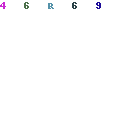‘Art in the Post-Digital Landscape’ exhibit to honor new ceramics professor among other artists
Both the digital medium and the hand are essential to create artwork.

New Art & Design professor in ceramics Joe Page will be honored in an upcoming exhibit relating art and the digital medium. Photo by Theresa San Luis.
At least according to Art & Design professor Laura Strand who is curating the “Art in
the Post-Digital Landscape” exhibit and reception with artist talks on Tuesday, Oct. 28 from 5-7 p.m.
Held within the department’s Gallery, Strand said the purpose of the event is to honor new ceramics professor Joe Page and eight other artists who will present their visual artworks inspired by the digital experience.
“They each use the computer as a teaching tool, for entertainment, and as a method for building their visual ideas and even aspects of their artwork,” Strand said. “However, they are also compelled to
transfer that information to the direct experience of making with their hands
through the physical manipulation of materials.”
Artworks to be exhibited will include ceramics, drawing, painting and weaving
presented as sculptural, collage, cast and installation objects according to Strand.
Artists whose works will be featured along with Page include Martin Brief, Jason Bly, Chad Curtis, Janice Lessman Moss, Tyler Lotz, Susan Murrell, Daniel Raedeke and Christopher Spangler.
Strand said she is excited to present Page who will display his art media ranging from ceramics and painting to textiles and sculpture.
She added that she believes he will bring a new direction and broad variety of viewpoints to the department.
“He brings in a very contemporary point of view about ceramics and about the ways in which ceramics can encompass and also stretch as an art discipline,” Strand said.
Page, formerly of Whitman College in Walla Walla, Wash., said it is fantastic to join the SIUE faculty.
“The ceramics program has a long and rich history and very enthusiastic students,” Page said. “It’s been a great adjustment and a challenge.”
Page said his work is largely traditionally based as far as the technical processes go using various tools such as porcelain slipcasting, plastic molds and rotary cutters. He added that he references in his works the visual language of such mediums as video games, mass transit diagrams and flow charts.
According to Page, he thinks ceramics is a wide open media and that you can develop a language based on how you use the material.
“Ceramics can look like it is made by the hand but in reality be tooled in a way that makes it look like it was never touched by human hands,” Page said. “That’s really the most exciting thing about ceramics.”
In explaining the digital medium through the arts, Strand said that Moss, a professor of Art at Kent State University in Ohio, creates structures for weaving with a computer.
“The digital language is an essentially part of her artwork, but the need to use the hand directly and to use a wide variety of materials as a part of that inspiration remains a necessary relationship for her as an artist,” Strand said.
Strand added that some of the artworks in the exhibit have been woven on an industrial loom while some are hand-woven on computer linked looms in university textile studios.
Strand further explained how she applies using the digital medium in her silkscreen class at SIUE.
According to Strand, she has students design the images and the repeat patterns using the computer lab in which the work is managed digitally.
“After those images are transferred to the silk screen, the tactile, physical making takes shape,” Strand said. “The artist prints, evaluates, makes the next decision and begins again printing, evaluating and making the next decision again, forming a cycle until the artwork reaches a finished state.”
Filed Under: Art and Design












